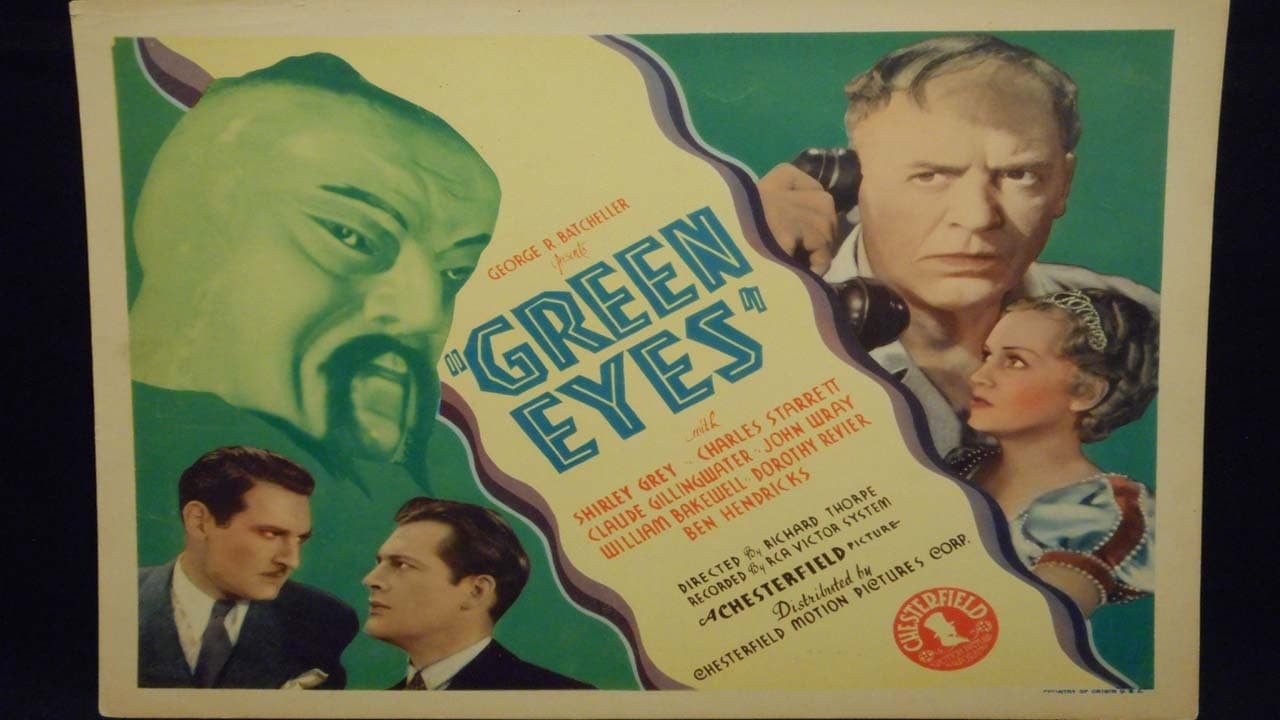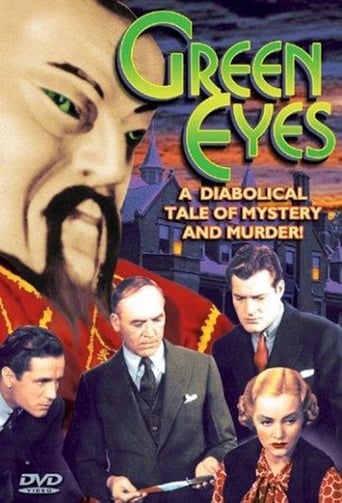


Made in 1934, less than a decade after the introduction of the 'talkie', this crusty old murder mystery makes the most of the relatively new sound technology, being 99.9% talk—which, consequently, makes the film 100% boring.Rather than concentrate on thrills and suspense, Green Eyes is all about the post-murder investigative procedure carried out by Inspector Crofton (John Wray), with a little amateur sleuthing from crime novelist Michael Tracy (Charles Starrett). Theories are bandied back and forth, clues are discussed, and suspects are interviewed at length, none of which is in the slightest bit entertaining.It's a whole load of talk, followed by some more talk, a little chit-chat, a bit of conversation, more talk, even more talk, and then well, you get the idea. By the end of this film, you'll be wishing that Al Jolson had kept his mouth shut and that the 'talkie revolution' had never happened.
... View MoreDuring the 1930s, Hollywood made a ton of murder mysteries. While they continued to make some in the 40s, the 30s was by far the most prolific period--and most of them were B-movies. These Bs had relatively unknown actors, simple plots and usually ended in about an hour...more or less. And, because I love old films, I've seen so many that they're all starting to look the same.Take, for instance, "Green Eyes". It has all the elements you'll find in such a murder film. There is always a know-it-all guy who isn't with the local police--in this case a guy who writes murder mysteries who just happens to be there. There are misdirections galore--with too many folks lying and a supposed suicide to cover up the real murder. The plot is also, at times, too complicated and full of unnecessary details (such as the whole green eyes angle). Not surprisingly, the well-trained professional cops are complete morons. Heck, by watching these films you'd think cops NEVER solved crimes more taxing than jaywalking! And, the film is made entirely of unknown actors. No, none of the film is all that original or all that good, though I did like that they made the writer a bit of a smart-mouth. Worth seeing if you're not yet sick of the genre, but there certainly are similar yet better films out there--such as any of the Charlie Chan films or "Footsteps in the Dark".
... View MoreCharles Starrett is a writer of murder mysteries who gets involved in—yes, a murder mystery. Nothing too original in Green Eyes, but a fair assortment of suspects and intriguing clues help maintain interest. Once again, it's a murder in a big old house in which nearly all of the film's action occurs. The event which sets the story in motion is the murder of the house's owner, one Steven Kester, during a costume party, and it's quickly established that his guests, his employees and even his granddaughter are not particularly sad to see him go. Even his butler can't find anything nice to say about him:Inspector Crofton: "What kind of a man was Mr. Kester to work for?" Lenox the butler: "He was a Simon Legree, sir. It's been most difficult to put up with him these past 20 years."For the first half of the film, John Wray as the inspector barks out a good half of all the dialog spoken as he rounds up clues and lays out the facts and motives. In the second half, we see more of Starrett as he quietly investigates while more noisily presenting a rather foppish front to most of the group. Shirley Grey and Dorothy Revier, as the two women involved in the case, are given just enough screen time to hint that their characters could contain some interesting depths; but alas, a 70-minute movie holds limited space for developing character studies. Nice touches: the goofy getups sported by the guests in the opening costume party and ensuing interrogation; the "green eyes" of the title; and a clever closing bit with Starrett at his typewriter.
... View More"A stately country mansion is the sight of a costume party thrown by its wealthy owner. The masquerade party comes to an abrupt end when the host is found dead in a closet, his body full of stab wounds. Now the authorities and a crime novelist, who is a guest at the party, must sort through the guest list and uncover the identity of the murderer," according to the DVD sleeve's synopsis.This dull whodunit stars handsome Charles Starrett (as Michael Tracy), despite the billing. Later, he became known as the western hero "The Durango Kid", one of the biggest "Box Office Western Stars" of the forties. As in other films, filmmakers got the ex-football star to partially undress, something usually reserved for women. Herein, you can catch Mr. Starrett in his pajama bottoms.**** Green Eyes (6/15/34) Richard Thorpe ~ Charles Starrett, John Wray, Shirley Grey
... View More